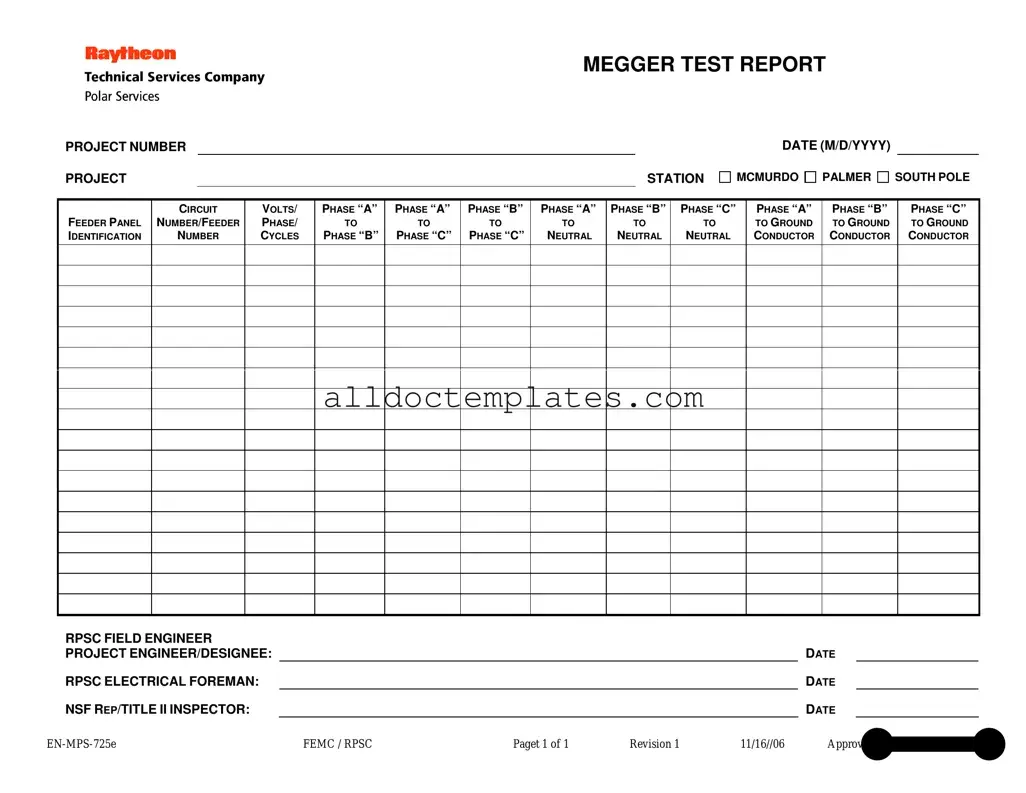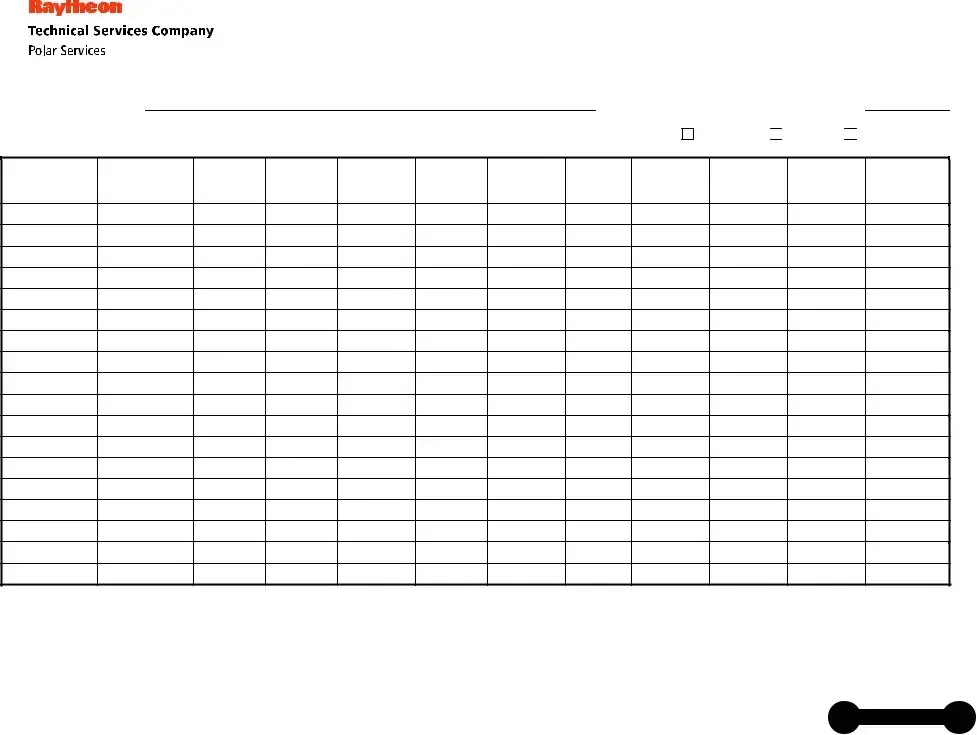Fill in a Valid Megger Test Form
The Megger Test form is a document used to record the results of insulation resistance testing on electrical systems. This form captures essential information such as project details, circuit identification, and voltage measurements across various phases. Accurate completion of the Megger Test form is crucial for ensuring the safety and reliability of electrical installations.
Get Your Form Now



 PALMER
PALMER 
 SOUTH POLE
SOUTH POLE